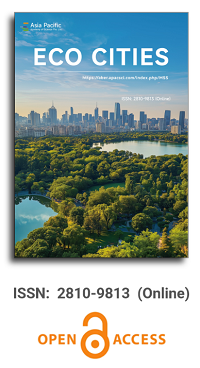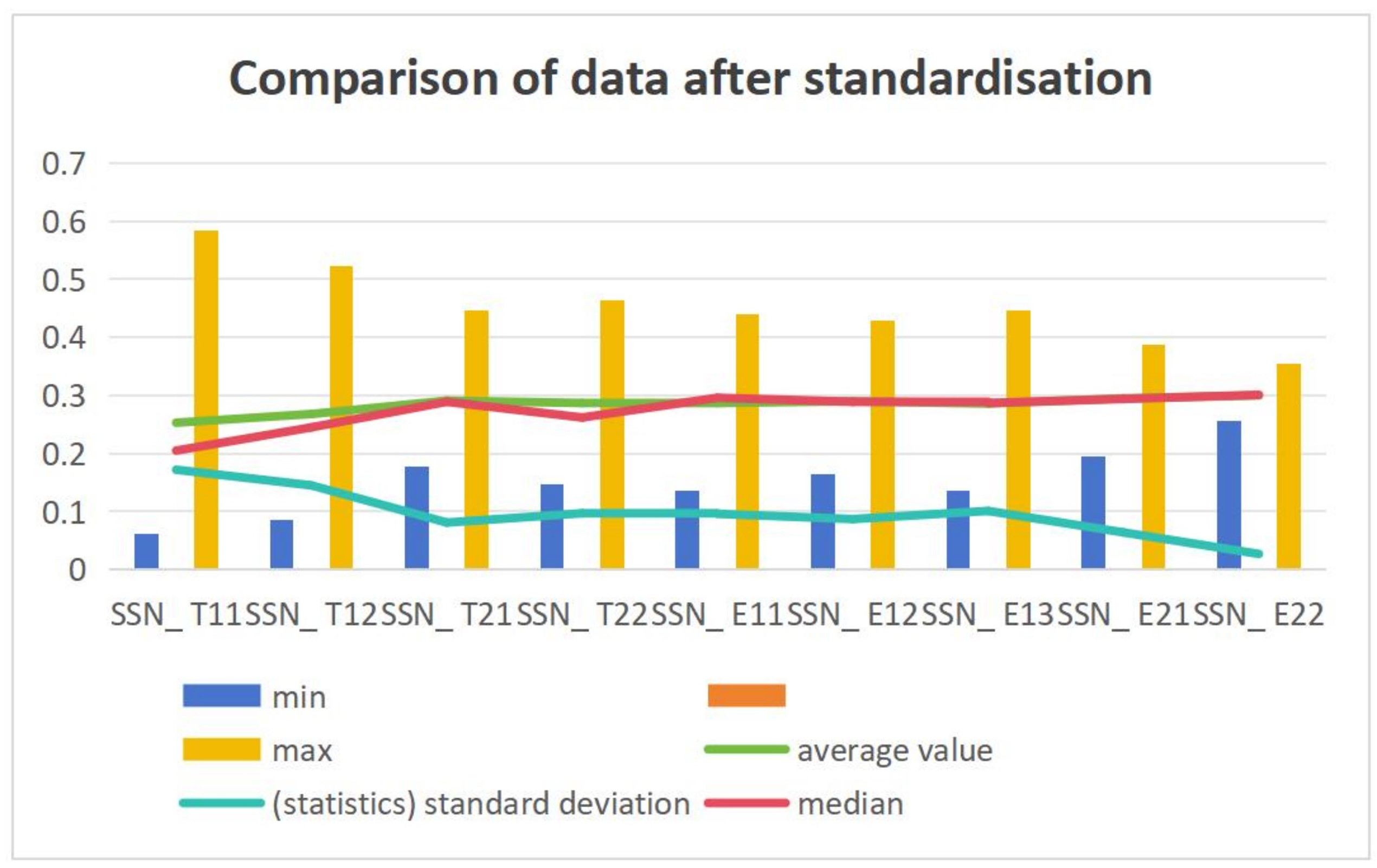


Advocating ‘eco-village’ for sustainable development: The dayalbagh way of life
Vol 5, Issue 1, 2024
Download PDF
Abstract
India as a country has its identity deeply rooted in its rural culture. Whether we talk about agriculture, tradition, food, art, or music, the rural society of India has always proven itself a representation towards the national front. The Dayalbagh society in Agra city of Uttar Pradesh (India) is engaged to strengthen the nation’s roots through education, technology, sustainability, management, innovation, research, and most importantly, selfless service. The major potential for economic growth in India lies in the development of its rural areas. This article is an attempt to spot the outlook of a society that has its inception for the past 100 years and is continuously making efforts to glorify the message of sustainable development, environmental protection, and rural development through its effective plans in designing an eco-village-based society. Based on the narrative description approach, this article highlights the efforts and strategies employed by the Dayalbagh society to promote sustainable development, environmental protection, and rural development. The focus is on how society integrates education, technology, sustainability, management, innovation, research, and selfless service to achieve these goals. The Dayalbagh society’s initiatives have taken into consideration economic, social, environmental, and human aspects, demonstrating significant contributions towards sustainable development and rural empowerment. The philosophy and successful practices of the Dayalbagh society can inspire and guide others in developing action plans for effective environmental protection and sustainable rural development. By adopting such approaches, other organizations, decision-makers, and individuals can contribute to the overall growth and well-being of rural areas in India.
Keywords
References
- Fletcher C, Ripple WJ, Newsome T, et al. Earth at risk: An urgent call to end the age of destruction and forge a just and sustainable future. PNAS Nexus. 2024; 3(4). doi: 10.1093/pnasnexus/pgae106
- Uwaga Monica Adanma, Emmanuel Olurotimi Ogunbiyi. A comparative review of global environmental policies for promoting sustainable development and economic growth. International Journal of Applied Research in Social Sciences. 2024; 6(5): 954-977. doi: 10.51594/ijarss.v6i5.1147
- Chopra SS, Senadheera SS, Dissanayake PD, et al. Navigating the Challenges of Environmental, Social, and Governance (ESG) Reporting: The Path to Broader Sustainable Development. Sustainability. 2024; 16(2): 606. doi: 10.3390/su16020606
- Zhu K, Ali A, Zhang T, et al. An empirical investigation of the impact of energy consumption, globalization and natural resources on ecological footprint and economic growth, evidence from China, Japan, South Korea and China Taiwan. Energy & Environment. 2024. doi: 10.1177/0958305x241251421
- Narayan A, Dua P, Allamraju AS. A Model Approach to Achieving SDGs: A Case Study from Dayalbagh, India. Environmental and Earth Sciences. 2022. doi: 10.20944/preprints202212.0279.v1
- Leap SR, Soled DR, Sampath V, et al. Effects of extreme weather on health in underserved communities. Annals of Allergy, Asthma & Immunology. 2024; 133(1): 20-27. doi: 10.1016/j.anai.2024.04.018
- Pradhan T, Galla A, Stoicheva M, et al. Proceedings of the NDIEAS-2024 International Symposium on New Dimensions and Ideas in Environmental Anthropology-2024 (NDIEAS 2024). Atlantis Press SARL; 2024. doi: 10.2991/978-2-38476-255-2
- Kumar P, Sharma L, Sharma NC. Sustainable Development Balancing Economic Viability, Environmental Protection, and Social Equity. In: Sustainable Partnership and Investment Strategies for Startups and SMEs. IGI Global; 2024. pp. 212-234. doi: 10.4018/979-8-3693-2197-3.ch012
- Takeuchi K, Namiki Y, Tanaka H. Designing eco-villages for revitalizing Japanese rural areas. Ecological Engineering. 1998; 11(1-4): 177-197. doi: 10.1016/S0925-8574(98)00031-7
- United Nations. Department of Economic and Social Affairs, Population Division. Available online: https://population.un.org/wup/ (accessed on 2 June 2023).
- Benedict MA, McMahon ET. Green infrastructure: Linking landscapes and communities. Island Press; 2012.
- Gurran N, Norman B, Hamin E. Climate change adaptation in coastal Australia: An audit of planning practice. Ocean & Coastal Management. 2013; 86: 100-109. doi: 10.1016/j.ocecoaman.2012.10.014
- Wise N, Clark J. Geographies of Renewal and Creative Change. Urban Transformations. doi: 10.4324/9781315624457
- Coaffee J, Lee P. Urban resilience: Planning for risk, crisis and uncertainty. Macmillan International Higher Education; 2016.
- Hickman R, Banister D. Transport, Climate Change and the City. Taylorfrancis; 2014. doi: 10.4324/9780203074435
- United Nations. Climate Change 2022: Mitigation of Climate Change. Available online: https://www.un.org/en/climatechange/reports#:~:text=IPCC%20%7C%20Climate%20Change%202022%3A%20Mitigation%20of%20Climate%20Change&text=In%20the%20scenarios%20assessed%2C%20limiting,reduced%20by%20about%20a%20third (accessed on 2 June 2023).
- United Nations Statistics Division. Take urgent action to combat climate change and its impacts. Available online: https://unstats.un.org/sdgs/report/2021/goal-13/#:~:text=To%20meet%20these%20goals%2C%20global,exceeding%20410%20parts%20per%20million (accessed on 2 June 2023).
- Işık C, Ongan S, Islam H, et al. Navigating sustainability: Unveiling the interconnected dynamics of ESG factors and SDGs in BRICS‐11. Sustainable Development. 2024. doi: 10.1002/sd.2977
- Kovacic Z, Kompare B. Sustainable development of settlements: The eco-village example. International Journal of Sustainable Development & World Ecology. 2016; 23(1): 67-77. doi: 10.1080/13504509.2015.1120680
- Jackson H, Svensson K. Ecovillage living: restoring the earth and her people. Available online: https://www.amazon.com/Ecovillage-Living-Restoring-Earth-People/dp/1903998166 2002 (accessed on 2 June 2023).
- Irz X, Roe T. Can the world feed itself? some insights from growth theory. Agrekon. 2000; 39(4): 513-528. doi: 10.1080/03031853.2000.9523669
- Liu C, Wang F, MacKillop F. A critical discussion of the BREEAM Communities method as applied to Chinese eco-village assessment. Sustainable Cities and Society. 2020; 59: 102172. doi: 10.1016/j.scs.2020.102172
- Ellis F, Biggs S. Evolving Themes in Rural Development 1950s‐2000s. Development Policy Review. 2001; 19(4): 437-448. doi: 10.1111/1467-7679.00143
- Feola G. Societal transformation in response to global environmental change: A review of emerging concepts. Ambio. 2014; 44(5): 376-390. doi: 10.1007/s13280-014-0582-z
- Seyfang G, Smith A. Grassroots innovations for sustainable development: Towards a new research and policy agenda. Environmental Politics. 2007; 16(4): 584-603. doi: 10.1080/09644010701419121
- Bibri SE, Krogstie J. Smart Eco-City Strategies and Solutions for Sustainability: The Cases of Royal Seaport, Stockholm, and Western Harbor, Malmö, Sweden. Urban Science. 2020; 4(1): 11. doi: 10.3390/urbansci4010011
- Young SC. The Emergence of Ecological Modernisation. Taylorfrancis. Available online: https://www.taylorfrancis.com/books/edit/10.4324/9781315812540/emergence-ecological-modernisation-mr-stephen-young (accessed on 3 June 2023).
- Singh M, Singh SP, Sinha AK, et al. Dayalbagh: An eco-village model for environment conservation. Environment Conservation Journal. 2012; 13(3): 73-85. doi: 10.36953/ecj.2012.130314
- Tomičić, Schatten M. A case study on renewable energy management in an eco-village community in croatia-an agent based approach. International journal of renewable energy research. 2016; 6(4): 1307-1317.
- Leal Filho W, Azul AM, Doni F, et al. Handbook of Sustainability Science in the Future. Springer International Publishing; 2022. doi: 10.1007/978-3-030-68074-9
- Darwai VR, Mandavgane SA, Lohia P. Systems based approach to a small scale dairy farm (Goshala): a case study. Built Environment Project and Asset Management. 2022; 12(3): 503-518. doi: 10.1108/bepam-01-2021-0022
- Garcia D, Muñoz Meléndez G, Arteaga A, et al. Greening Urban Areas with Decentralized Wastewater Treatment and Reuse: A Case Study of Ecoparque in Tijuana, Mexico. Water. 2022; 14(4): 596. doi: 10.3390/w14040596
- Bandhu MS, kumar Singh MN, Sharma VN. A Review of Sustainable Tribal Development Approach for the Upliftment of Tribal Communities. Samdarshi. 2023; 16(4): 4814-4826.
- Sun L, Fertner C, Jørgensen G. Beijing’s First Green Belt—A 50-Year Long Chinese Planning Story. Land. 2021; 10(9): 969. doi: 10.3390/land10090969
- Kolhe NP, Deori G, Rajoria V. Youth and Public Transportation. Energy Efficient Vehicles. 2024: 33-57. doi: 10.1201/9781003464556-3
- Fabrègue BFG, Bogoni A. Privacy and Security Concerns in the Smart City. Smart Cities. 2023; 6(1): 586-613. doi: 10.3390/smartcities6010027
Supporting Agencies
Copyright (c) 2024 Hans Kaushik
License URL: https://creativecommons.org/licenses/by/4.0/

This site is licensed under a Creative Commons Attribution 4.0 International License (CC BY 4.0).

Chinese Academy of Sciences, China
Indexing & Archiving
Asia Pacific Academy of Science Pte. Ltd. (APACSCI) specializes in international journal publishing. APACSCI adopts the open access publishing model and provides an important communication bridge for academic groups whose interest fields include engineering, technology, medicine, computer, mathematics, agriculture and forestry, and environment.



.jpg)

.jpg)



